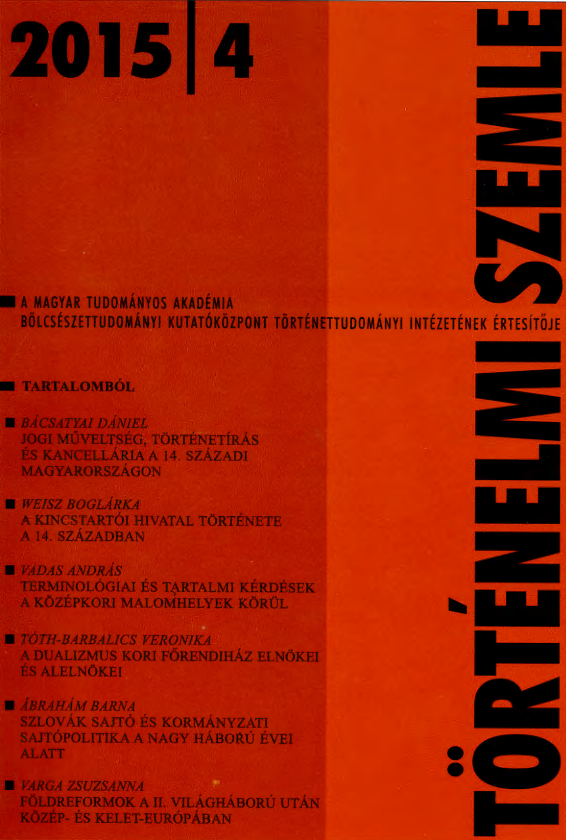A dualizmus kori főrendiház elnökei és alelnökei
The Presidents and Vice-presidents of the Upper House during the Dual Monarchy (1867–1918)
Author(s): Veronika Tóth-BarbalicsSubject(s): Governance, Political history, 19th Century, Pre-WW I & WW I (1900 -1919)
Published by: Magyar Tudományos Akadémia Bölcsészettudományi Kutatóközpont Történettudományi Intézet
Keywords: president; vice-president; Upper House; Dual Monarchy; 1867-1918
Summary/Abstract: The study examines the selection, functions and activities of the leading functionaries of the Upper House of the Hungarian parliament. Applying the methods of biography and prosopography, the analysis is based on the biographies of the presidents of the Upper House published in 2002, the parliamentary almanachs of the dualist period, archival sources (before all the presidential papers of the Upper House and the archives of the prime ministry), and on the parliamentary prints. The president and vice-president (vice-presidents after the reform of the Upper House in 1885) were appointed by the ruler upon nomination by the government (acts 1848:4., 1885:7.). In the process of selection considerations of party politics played an increasing role with the passing of years. It could also be observed that the leaders of the Upper House gradually ceased to hold parallelly dignities of medieval origins as well. The study enumerates the official functions of the president according to the legal regulations and the domestic rulings of the Upper House. It also compares them with the competences of the presidents of the House of Representatives and of the Austrian Herrenhaus. As for the political roles of the presidents and vice-presidents, whereas in the first decades of the dualist monarchy they frequently took an oppositional stance, after 1884 they were staunch supporters of the governing party. The prosopographical analysis examined the social origin and rank of the presidents and vice-presidents, their confession, age, office term, as well as the causes of their leaving the office. Although the presidential body of the Upper House was dominated throughout by aristocrats who were members of the House by perpetual right, after 1885 members by non-perpetual right and even politicians of a bourgeois background were elected into the leading body. The selectional procedure was influenced by factors other than mere political fidelity. Thus, after 1885 one member of the body was always Calvinist. While the persons appointed as president and vice-president were generally politicians who had passed their middle age, after 1885 the average age of the leading body increased. This, however, was only one of the reasons why the time spent in office contracted: another was the closer attachment of the presidential body to the government in office. A clear proof of this ever closer attachment is that while in the period between 1867 and 1885 only one among the six presidents and vice-presidents resigned for political reasons, between 1885 and 1918 this ratio was 11 to 25.
Journal: Történelmi Szemle
- Issue Year: 2015
- Issue No: 04
- Page Range: 541-563
- Page Count: 23
- Language: Hungarian

